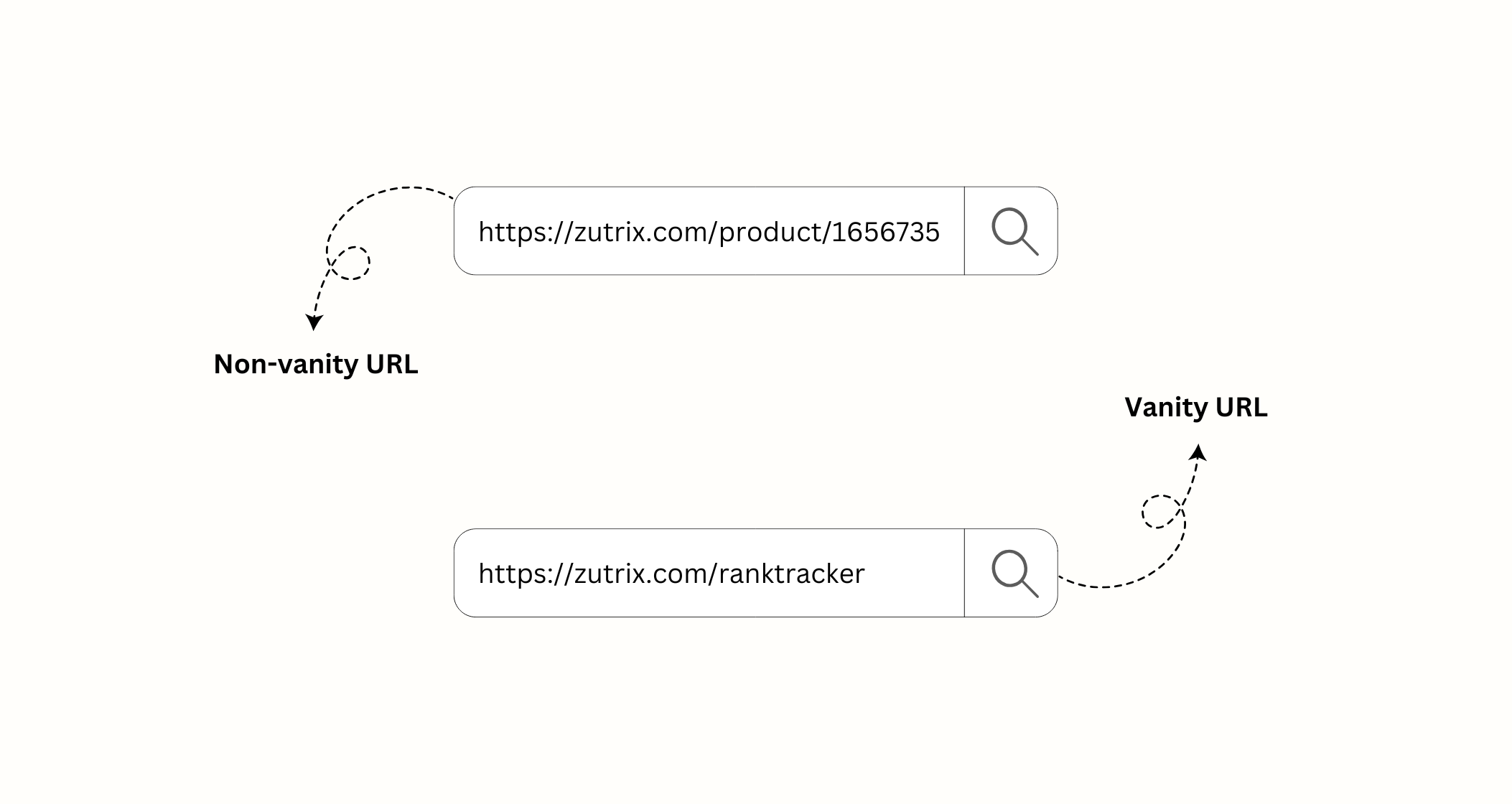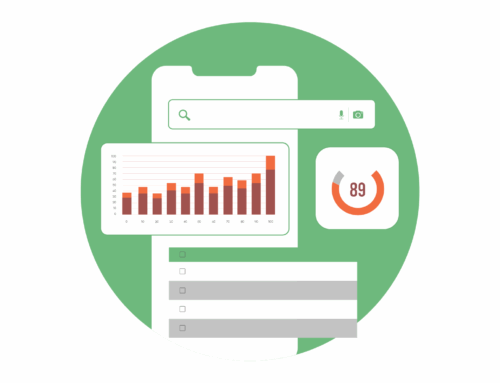Long and lengthy URLs are confusing, look ugly, and no one seems to remember them.
While in a technical sense, it doesn’t matter, having an ugly long URL can negatively affect your brand reputation and the user experience of your website.
However, let’s be honest.
Sometimes, making every URL on our website correctly optimized and beautiful can be challenging (especially if it’s an eCom site or a massive website with hundreds of pages).
That’s where vanity URLs come into the picture.
But what is a Vanity URL?
And how can you create one for your URLs?
That’s what we’re going to learn in this post.
So, without wasting any further time, let’s dive right in.
Table of Contents
What is a Vanity URL?
A vanity URL is a customized web address that replaces any long and ugly-looking URL, making it easy to remember and accessible for other users.
While usual URLs are a combination of confusing numbers and letters, a vanity URL is typically short and mostly includes one or two words (often the main keyword associating the page or the brand name itself).

Vanity URLs are also called branded URLs or custom URLs.
Typically, vanity URLs are mostly used in brand campaigns, advertisements, social media campaigns, event promotions, and print advertisements to make it easier for the prospect to navigate your website without difficulty.
Brands mostly use Vanity URLs instead of the real ones because these types of URLs are easy to remember, user-friendly, and trackable.
The best part about vanity links is that you can also track how many people click on your link, where the traffic is coming from, the location of the traffic, and much more.
3 Use Cases of Vanity URLs
Vanity URLs can be used in many different ways to make your customer experience better and measurable.
Here are some of the best use cases of vanity URLs where they are primarily applicable.
1. Marketing or Advertisement Campaigns
One of the best use cases of vanity URLs is using it for your marketing and advertisement campaigns.
It doesn’t matter whether you run social media ads, search ads, print media ads, television ads, or billboards, vanity URLs can be used across all forms of marketing and advertisement campaigns.
Using a unique and easily rememberable vanity URL can make it insanely easier for your potential customers to find your website and take the appropriate action (which, from your marketing campaign’s perspective, can be a purchase or a simple sign-up).
For example, an eCommerce company selling mattresses could have a vanity URL for their latest Black Friday campaign like this: “https://xyzmatress.com/blackfriday”.
A potential mattress buyer looking at this vanity URL could understand what it is about (in this case, a Black Friday sale), and they could remember it as compared to a generic eCommerce product link, which looks like this: “https://xyzmatress.com/product/14264324.”
2. Easy Sharing
People judge too quickly on social media — that’s just the harsh truth you can’t deny.
When sharing your website or product links on social media — long and complicated URLs can make your social media posts look messy and unprofessional.
Also, major social media platforms like X (formerly Twitter) and LinkedIn have specific character limits.
If your URL is too lengthy, this will eat up most of the character limits, and you’ll be left with a limited number of characters to customize the post.
When you use vanity URLs, you save yourself from both of these problems.
The vanity URL looks much more professional and clean, and it’s also quite short in length compared to a naked website URL.
3. Performance Tracking
Online advertisement and marketing campaigns are mostly trackable. You can easily measure your campaign performance and act accordingly.
But if you run marketing campaigns using offline methods like billboards, print ads, television ads, and radio ads, you generally don’t have any option to track the actual performance of the campaigns.
When you use vanity URLs in your offline marketing campaigns instead of using your direct website URL, you can track:
- How many people clicked on your link
- What are their demographics
- Source of the traffic
This would give you a clear view of your campaign’s performance and confidence to decide on the next steps.
How to Create a Vanity URL
The word “vanity URL” might seem confusing, but it’s actually pretty straightforward.
Here’s how easily you can create a vanity URL for your website in just a few simple steps for your next marketing campaign.
Step 1: Choose a Domain
First, you have to choose a domain name and register it with GoDaddy, NameCheap, or BigRock.
The domain name should be related to your company name, the product or service you sell, or any specific target keyword of your industry.
You can even have the same domain name as your main company website but just change the TLD (ending part of the domain).
For example, if your main website is xyzmatress.com, you choose a custom domain like xyzmatress.link, xyzmatress.io, xyzmatress.gift, xyzmatress.ads, etc.
Step 2. Setup Your Vanity URL
Now, there are plenty of ways to create a vanity URL once you have registered your domain name.
However, the easiest way is to use a URL shortener tool.
Here are some of the best URL shortener tools you can try:
These days, a couple of social media management tools, automation tools, and page builders have also started adding this additional feature to their tools.
For example, if you use HootSuite, you can use their built-in link shortener feature with your custom domain.
However, if you want more flexibility, better features, and advanced analytics, it’s always better to use a feature-rich URL shortener tool like Bit.ly, Rebrandly, or Tinyurl.
And that’s it.
That’s how easily you can create a vanity URL in just two simple steps.
FAQs
Do vanity URLs impact SEO?
Vanity URLs do not magically increase your website ranking in the SERP. However, having a vanity URL can indirectly generate more traffic from other sources and help you build a better brand, which can be a plus point for SEO.
Is a vanity URL a redirect?
Yes, a vanity URL serves as a simplified version of your main URL and redirects users to the main page.
What is the difference between a vanity URL and a domain?
A vanity URL is a customized branded URL for a particular web page. On the flip side, a domain is the main address of your website or your vanity URL.
Is a vanity URL 301 or 302?
Vanity URLs mostly use 301 redirects (permanent) while directing traffic from one page to another.
Is a long vanity URL bad for SEO?
Yes, a long vanity URL is never a good idea. Make sure your vanity URLs are short and easy to remember.
Conclusion
Vanity URLs are a great option for turning any long and ugly-looking link into a clean and memorable one.
Vanity URLs not only make the user experience better for your customers, but they also make your links easily shareable and help you monitor your marketing campaign’s performance.
It’s even more useful when you heavily rely on offline marketing campaigns where tracking your actual campaign conversion is almost impossible.




